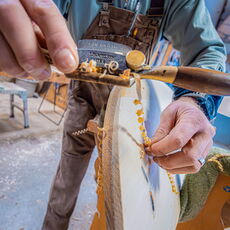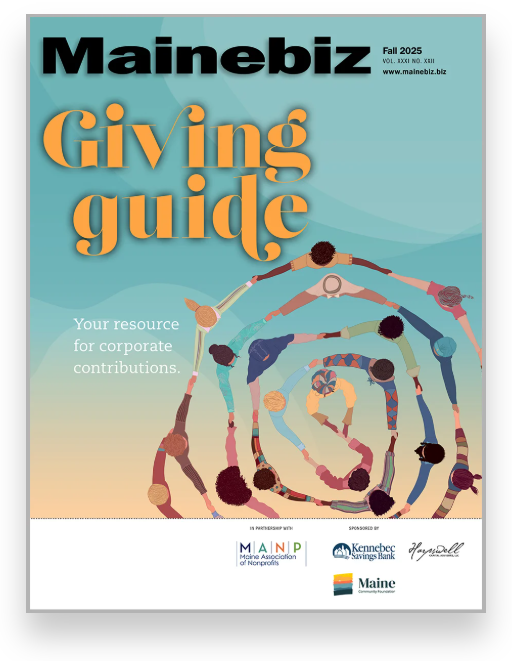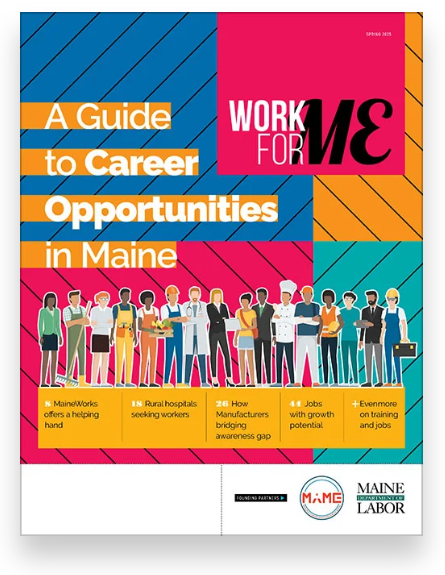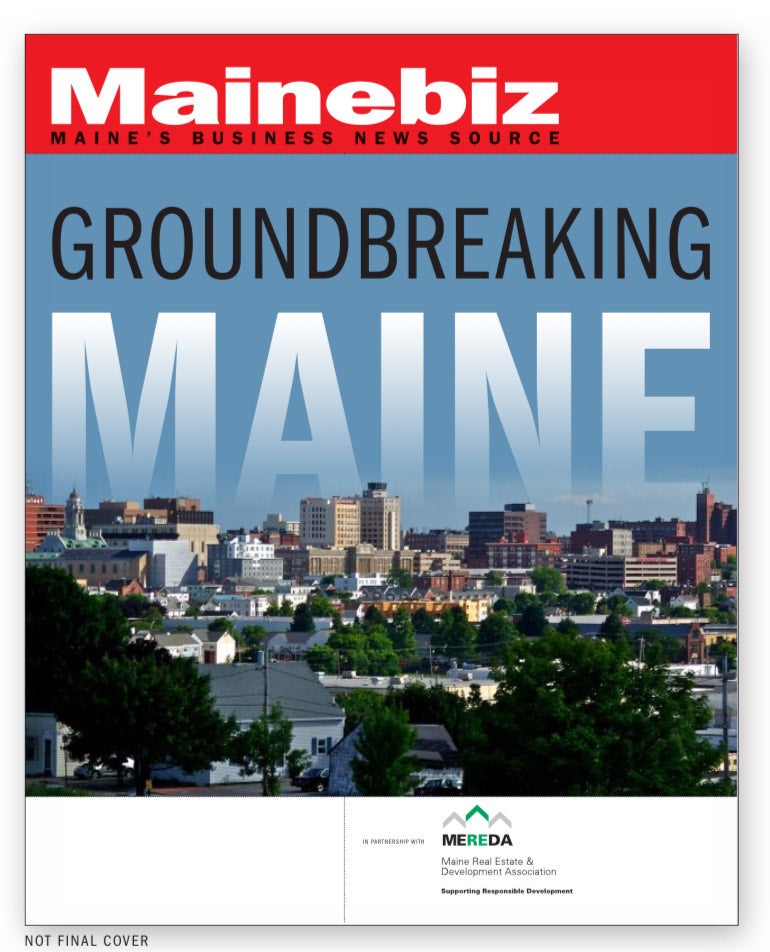
Processing Your Payment
Please do not leave this page until complete. This can take a few moments.
- News
-
Editions
View Digital Editions
Biweekly Issues
- November 03, 2025
- October 20, 2025
- October 6, 2025
- September 22, 2025
- September 8, 2025
- August 25, 2025
- + More
Special Editions
- Lists
- Viewpoints
- Our Events
- Calendar
- Biz Marketplace
Made in Maine: Going with the ‘Grain’
 Photo / Tim Greenway
Mike LaVecchia, founder of Grain Surfboards, in a showroom adjacent to the York workshop.
Photo / Tim Greenway
Mike LaVecchia, founder of Grain Surfboards, in a showroom adjacent to the York workshop.
On a recent mid-winter day, the York barn-workshop for the wooden surfboard maker Grain Surfboards smells like sawdust and woodsmoke.

On weekends, the workshop is often buzzing with classes, but during a recent Mainebiz visit founder Mike LaVecchia and board builder Theo Papademetriou were working on some prototype surfboards.
Most of the boards Grain produces have Maine white cedar decks from trees milled by the Maine Cedar Store in Portage, Aroostook County. The cedar gives the distinctive “grain” look of the finished boards — and gives the workshop its distinctive aroma.
In recent years, Grain has experimented with making the surfboard “rails,” or sides of the board, with a “green foam” that offers more resilience to dings and unexpected collisions. The green foam board has come from out of state, but Grain is in the process of switching over to a panel board produced in Woolwich by Edura Marine, led by founder and CEO Ben Davis. Grain calls this line the GreenRail boards.
But, on the recent day, LaVecchia and Papademetriou were experimenting with an even more sustainable though less local alternative: cork, which mainly comes from Portuguese trees and is supplied by a Texas company, Jelinek Corp.
The cork provides a softer rail that can be easily shaped and adds buoyancy to the board.

The real breakthrough, LaVecchia says, will be if the board can be made watertight without fiberglass cloth and epoxy — a product that has long been a staple in surfboard construction but is less environmentally friendly. Grain is building 100 of the cork-edged prototype boards using Titebond carpenter’s glue rather than epoxy. LaVecchia hopes to eventually replace fiberglass cloth with a flax-based fabric, a more sustainable alternative.
Maine-made surfboards
Going back to the 1960s, the majority of surfboards you would see in a surfshop were hand-shaped out of foam and sheathed in fiberglass; many were made in Southern California. In recent years, there has been a wave of factory-made boards coming from Asia and other markets, including some with foam “soft tops” for beginners or crowded surf spots.

Grain Surfboards and a few other companies have been a rarity, producing hollow boards out of wood strengthened by an internal framework (much like the “ribs” in the hull of a wooden boat).
The divide between the traditional surfboard “shapers” and the production boards has become more pronounced in recent years.
But Grain Surfboards — which will mark 20 years in business in May — offers a third category altogether: A board produced by hand that falls more in line with Maine’s wooden boat-building culture.
“I use the term ‘builder’ rather than ‘shaper,” says LaVecchia, who worked for Burton Snowboards in Vermont and as a boatbuilder before launching Grain from a barn not far from the current location.
Grain produces a range of shapes, from four-foot belly boards (paipos) to 12-foot “glider” models. Nolan Collins, the team’s longtime designer, also works with clients to come up with custom designs. Grain sells finished boards but also kits that can be produced in classes at Grain or at home.
Even with the frames cut on a CNC machine and the white cedar decking and bottom glued up, the creation of a Grain board still requires some “shaping” in the final stages. LaVecchia and the other builders handshape the rails, whether cedar or cork or green foam. Each board is hand-signed by the builder who finished the board.
Mainebiz web partners
Related Content

The Giving Guide
The Giving Guide helps nonprofits have the opportunity to showcase and differentiate their organizations so that businesses better understand how they can contribute to a nonprofit’s mission and work.
Learn More
Work for ME
Work for ME is a workforce development tool to help Maine’s employers target Maine’s emerging workforce. Work for ME highlights each industry, its impact on Maine’s economy, the jobs available to entry-level workers, the training and education needed to get a career started.
Learn More
Groundbreaking Maine
Whether you’re a developer, financer, architect, or industry enthusiast, Groundbreaking Maine is crafted to be your go-to source for valuable insights in Maine’s real estate and construction community.
Learn more-
The Giving Guide
The Giving Guide helps nonprofits have the opportunity to showcase and differentiate their organizations so that businesses better understand how they can contribute to a nonprofit’s mission and work.
-
Work for ME
Work for ME is a workforce development tool to help Maine’s employers target Maine’s emerging workforce. Work for ME highlights each industry, its impact on Maine’s economy, the jobs available to entry-level workers, the training and education needed to get a career started.
-
Groundbreaking Maine
Whether you’re a developer, financer, architect, or industry enthusiast, Groundbreaking Maine is crafted to be your go-to source for valuable insights in Maine’s real estate and construction community.
ABOUT
NEW ENGLAND BUSINESS MEDIA SITES
No articles left
Get access now
In order to use this feature, we need some information from you. You can also login or register for a free account.
By clicking submit you are agreeing to our cookie usage and Privacy Policy
Already have an account? Login
Already have an account? Login
Want to create an account? Register
Get access now
In order to use this feature, we need some information from you. You can also login or register for a free account.
By clicking submit you are agreeing to our cookie usage and Privacy Policy
Already have an account? Login
Already have an account? Login
Want to create an account? Register









0 Comments